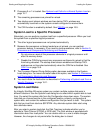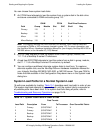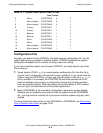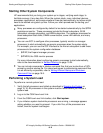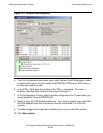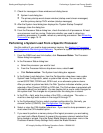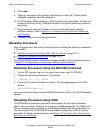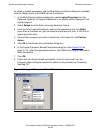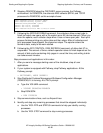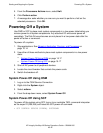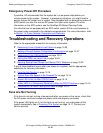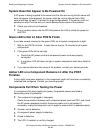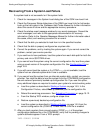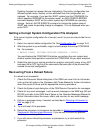
Starting and Stopping the System
HP Integrity NonStop NS-Series Operations Guide—529869-005
15-14
Minimizing the Frequency of Planned Outages
Minimizing the Frequency of Planned Outages
To minimize the frequency of planned outages:
•
Anticipate and plan for change
•
Perform changes online
Anticipating and Planning for Change
Anticipating and planning for change is a key requirement for maintaining an
enterprise-level, 24 x 7 operation. To avoid taking a NonStop NS-series system down
unnecessarily:
•
Evaluate system performance and growth—Track system usage and anticipate
system capacity and performance requirements as new applications are
introduced.
•
Provide adequate computer room resources—Avoid unnecessary downtime by
ensuring you have enough physical space and power and cooling capacity to
handle future growth.
•
Configure the system with change in mind—Configure the system in a way that
easily accommodates future growth. One way to do this is to select limits that
allow for growth. For example, by configuring enough objects to provide for the
anticipated growth of your online transaction processing environment, you can
increase the maximum number of objects controlled by PATHMON objects without
a system shutdown.
Stopping Application, Devices, and Processes
Whenever possible, schedule system shutdowns in advance so that system users are
prepared. Then, stop applications, devices, and processes in an orderly fashion. To
include shutdown commands in a shutdown file, see Stopping the System on
page 15-16.
Unless you stop a system in a careful and systematic manner, you can introduce
abnormalities in the system state. Such abnormalities can affect disk file directories
and can cause the processors to hang in an endless loop when you attempt to load
your system.
You must be aware of which processes must not or cannot be stopped. For example,
some TCP processes must not be stopped. System processes must not be stopped.
Generic processes configured to be persistent cannot be stopped.
Note the effect on the system when you stop these applications:
•
Stopping Pathway applications begins shutdown of all TCP objects (shutting down
TERM objects and then themselves) in parallel. New work is disallowed. The
PATHMON process logs the start and completion of SHUTDOWN2. It does not log
status messages during shutdown.



